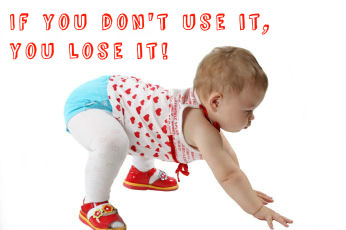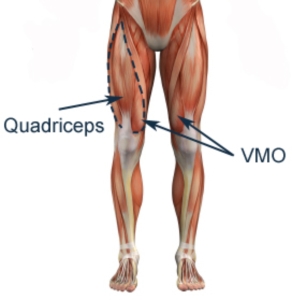Online Fitness Training & Movement Rehab by a Qualified Physiotherapist & Personal Trainer.
DO YOU STRUGGLE WITH PULLUPS?
DO YOU GET LOW BACK PAIN WITH DEADLIFTS OR KETTLEBELL SWINGS?
Perhaps you are compromising your back as a result of poor hip movement...
Studies done on low back pain show that the pain is often caused by losing the ability to move through the hips. I see this all the time in clients and always have to re-pattern their hip movement to save their backs!
Dr Stuart McGill strikes again: “This is why the hip hinge is known to be a superior movement pattern for low back pain clients. Learning to hip hinge is paramount for both injury prevention and optimal performance.”
Too right Stuart!
Learn how to move before you learn how to be strong!
If you'd like to learn how to hip hinge correctly, check this out.
If you feel like you need to work on your hip mobility then follow one of our hip mobility videos here.
Don't sacrifice your lower back for Deadlifts or Kettlebell Swings unless the movement has been broken down and taught to you effectively and you can carry it out extremely well.
CORE EXERCISE #3 : BIRD DOG
3rd core exercise in our top 4...
BIRD DOG:
Another great core activation drill. Awesome for improving Multifidus function; neck & shoulder stability as well as overall core stability.
For full explanation of the exercise please visit "stability exercises" in our exercise library.
If you found this information (or any info on this page) useful, please share.
THOSE AHA MOMENTS...
I love nothing more than when a client has a lightbulb moment. I live for these moments! Here is one from yesterday:
Client: “I’m not sure if it was right but when I was carrying my shopping home yesterday I tried to focus on keeping my shoulders drawn down and gently squeezing my arm to my side like we have been doing in the exercise you get me to do. I noticed that my shoulder that usually aches a lot after my shopping trip was fine yesterday and thought I’d ask if I was doing the right thing?”
Me: “Hell yeah, you were doing the right thing! That’s what I like to call body awareness, AKA progress! That is EXACTLY what you should be doing every time you carry anything.”
Client: “Ah, I thought it must have been right as my shoulder didn’t hurt”.
The scenario ended with a HIGH 5! ☺
When we make our bodies more aware of good movement patterns and enforce it as a habit that is where CHANGE occurs! Those “AHA” moments are way more effective if the client is taught the biomechanics of a movement, along with the FEEL of it. These movement patterns are then trained and re-inforced in session. When this translates to their lives and they begin to make connections between WHY we are doing what we are in the gym and how it translates to their lives it is hugely empowering for each individual. It doesn’t always make sense when explained during sessions until the connection is made outside of the gym through body awareness.
I always try and train my clients for LIFE, to prepare them for whatever life throws at them and in order for them to achieve functional and pain free lives. Everything we do in-session has a purpose and a direct translation to their necessary function through life, whether it be through sport; certain hobbies; achieving basic pain free functional movement patterns or just being ready for the unpredictable!
NOW LET ME SEE YOUR HIPS SWING
THE POSTERIOR OBLIQUE SLING...CONTROLLING ROTATIONAL FORCES
REGRESS TO PROGRESS
To quote Pat Flynn from Chronicles of Strength (love this simple, yet effective way of summing up this whole blog post in 3 small symbols)...
"- = +" :-)
The golden rule in movement: REGRESS TO PROGRESS!...
For the trainers out there: please don’t expect your client to “get” movement by handing them a weight they’re not ready for and just expecting them to move correctly by shouting out a few cues to them…it ain’t gonna happen!
The only thing that happens is they learn bad movement and possibly land up with an injury.
For the fitness enthusiasts out there: you have to break down movement and work on the weaknesses within a movement pattern in order to progress a movement. Don't just think that practising single leg squats or pistols is going to get you better at doing pistols...it's only gonna get you injured. There is a reason why you struggle with certain movements, you need to find that reason and work on it! Maybe your ankles aren't mobile enough; maybe your hips are unstable; maybe you lack good sequencing in your inner unit (core); maybe you have flexility issues in either certain muscles or joints; maybe fear is holding you back; maybe all of the above! :-o There are a number of possible, likely reasons but you need to find yours.
Just because your mate did loads of hamstring flexibility and went from finding pistols difficult to being able to achieve them, doesn't mean that's going to work for you. We're all individuals here and you need to treat yourself as one. And holding a kettlebell out in front of you is not the answer, yeah, you might feel more stable but maybe, just maybe that is because you have core issues and the kettlebell is forcing your body to react to the weight by engaging your core before you descend, but what happens when you try again without the kettlebell?
I'd suggest ditching the kettlebell and stepping away from the pistol for a while to work on core sequencing...once you've made progression there, find ways to progress. I'm just using pistols as an example, this applies to anything in life. And it takes time, you're not gonna fix things overnight.
So please, think before you cause yourself harm. If I gave you one Golden Rule of advice it would be CHECK YOUR BREATHING! This is highly important for any form of stability work. If your'e unsure, my stability exercise page has a great description of how to check your breathing and how to correct it, I have video links on Youtube to help as well & my facebook page has a link to an awesome interview with Dr Perry Nickleston & Julie Wiebe on the pelvic floor & breathing...Check it out! Core function begins with breathing!
I repeat: Regress to progress…Perfection before load…Get assessed if you're unsure...
PREVIOUS INJURY IS A BIG PLAYER IN THE MOVEMENT GAME!
One of my clients, who is a keen diver, tells me whenever he swims or dives he usually always gets pretty bad cramping in his right hamstring towards the end of the swim/dive and wandered if there was anything he could do for it.
After a couple of minutes of assessment I had discovered he had a hamstring to quad dysfunction & his hamstrings were compensating for his medial quadricep (Vastus Medialis) predominantly. His VMO muscle (Oblique fibres of the Vastus Medialis that form the teardrop muscle at the knee) was particularly weak and had some noticeable wasting. His quadriceps in general on the Right side were slightly wasted in comparison to the Left.
He then precedes to tell me when he was 15 years old (+-50 years ago) he tore his medial quad & never got treatment on it, there was a noticeable dip in the muscle bulk as well which had been there ever since (a give away for a full tear or a possible partial tear). EUREKA!
So our findings related back to an ancient injury from decades ago that has manifested as dysfunction in his right side and causing him problems at this time. He admitted never having issues after the injury healed and kept playing footy for years.
Moral of the story, even though his injury was decades old and he'd adapted to it in a way that enabled him to get away without too much trouble for many years, it eventually comes back to bite you in the ass! Some cases being worse than others but don't ride on dysfunction for too long as it will always win! Post injury compensations stay with you for life, unless of course, you seek help to change them!
NO. 4 AND FINAL OF OUR TOP 4 AB EXERCISES: FITBALL OR TRX JACKNIFE AND/OR PIKE
Jackknife and Pike on a fitball or TRX. A great ab and core exercise for hitting the abs hard!
Want to train your ABS in an efficient, functional way?
As mentioned in the previous Sit-up posts, you all know (unlike most personal trainers), I am no fan of traditional sit-ups. So here is the fourth and final of 4 alternatives that will hit your abs hard and give you that burn that you probably desire. As well as increase the function of your core area if done correctly.
No. 4 in our Top 4 ab exercises
4. TRX or Fitball Jackknife/Pike:
This is really two in one as the pike is a good progression from the Jackknife!
Using either a fitball or a TRX for the Jackknife.
Hands on floor in a pushup position with shins and ankles on fitball (or feet into TRX straps). Push your hands away from the floor to activate your shoulders, gently push your ankles into the ball and drive your knees towards your elbows. Make sure you brace your core and don't let your pelvis sag down or raise up too much. Keep your shoulders stable so there is no movement through them.
The pike is very similar but instead of bending the knees, keep them straight, push your feet into the fitball or straps and reach your butt towards the ceiling, whilst still pushing your hands away from the ground. Keep your neck neutral, I could probably have tucked my chin in a little bit more in this video.
Only lift your hips as high as is comfortable. Mine go pretty high but start by getting used to the movement first and making sure you’re moving through your hips and not your lower back.
These are both quite advanced moves so please only attempt if you have relatively good stability and strength.











